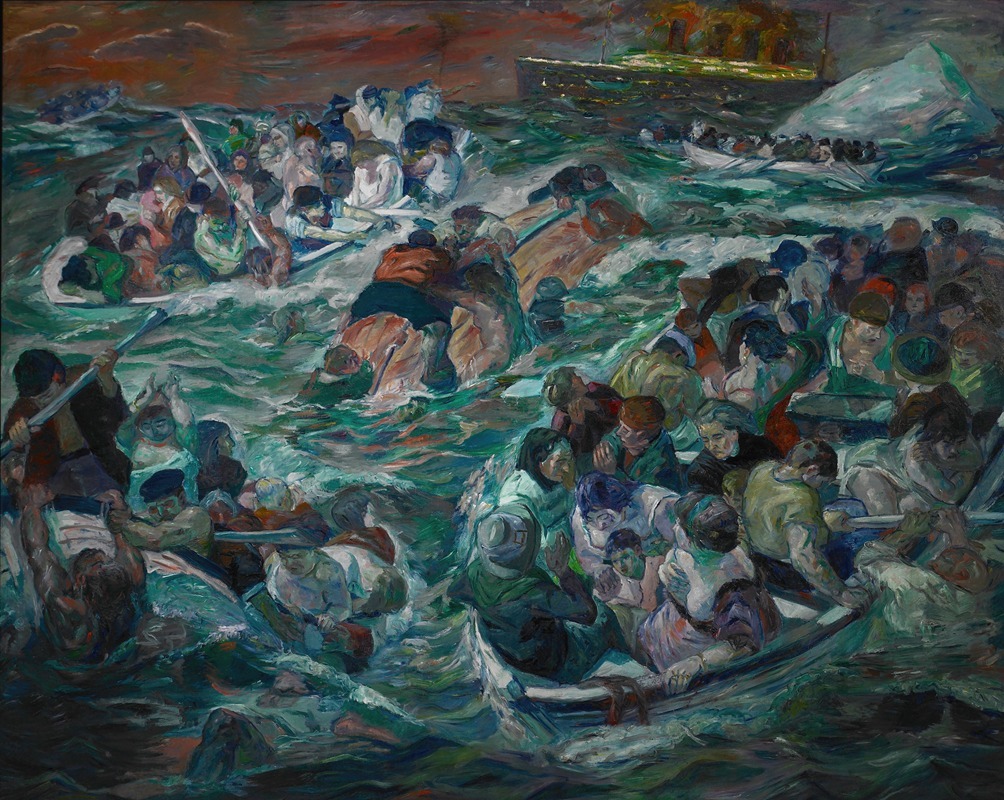
Sinking of the Titanic
A hand-painted replica of Max Beckmann’s masterpiece Sinking of the Titanic, meticulously crafted by professional artists to capture the true essence of the original. Each piece is created with museum-quality canvas and rare mineral pigments, carefully painted by experienced artists with delicate brushstrokes and rich, layered colors to perfectly recreate the texture of the original artwork. Unlike machine-printed reproductions, this hand-painted version brings the painting to life, infused with the artist’s emotions and skill in every stroke. Whether for personal collection or home decoration, it instantly elevates the artistic atmosphere of any space.
Max Beckmann's "Sinking of the Titanic" is a notable painting by the German artist, created in 1912. Beckmann, an influential figure in the Expressionist movement, was known for his intense and often dramatic portrayals of contemporary events and human experiences. This particular work reflects his response to the tragic sinking of the RMS Titanic, which occurred on April 15, 1912, after the ship struck an iceberg during its maiden voyage from Southampton to New York City.
The painting captures the chaos and despair of the disaster, which resulted in the loss of more than 1,500 lives. Beckmann's approach to the subject matter is characteristic of his style, emphasizing emotional intensity and the darker aspects of human nature. The composition is dynamic, with swirling forms and distorted figures that convey the panic and confusion of the passengers and crew as they faced imminent death.
Beckmann's use of color and form in "Sinking of the Titanic" is significant. The palette is somber, dominated by dark blues and blacks, which evoke the cold, unforgiving nature of the North Atlantic Ocean. The figures are rendered in a manner that suggests both physical and psychological turmoil, with exaggerated expressions and contorted bodies that reflect the horror of the event. This expressionist technique serves to immerse the viewer in the emotional reality of the tragedy, rather than focusing on a literal depiction of the scene.
The painting is not just a representation of the Titanic disaster but also serves as a broader commentary on the fragility of human life and the hubris of technological advancement. The Titanic, often described as "unsinkable," was a symbol of early 20th-century progress and industrial prowess. Its sinking challenged the era's faith in technology and human infallibility, themes that Beckmann explores through his work.
Max Beckmann's "Sinking of the Titanic" is housed in a private collection, and as such, it is not as widely accessible as some of his other works. However, it remains an important piece within his oeuvre, illustrating his ability to capture the zeitgeist of his time through art. Beckmann's work continues to be studied for its emotional depth and its reflection of the societal issues of the early 20th century.
Overall, "Sinking of the Titanic" exemplifies Beckmann's skill in using art to process and comment on contemporary events. His expressionist style allows viewers to engage with the emotional and psychological dimensions of historical moments, making his work both a personal and universal exploration of human experience.


















